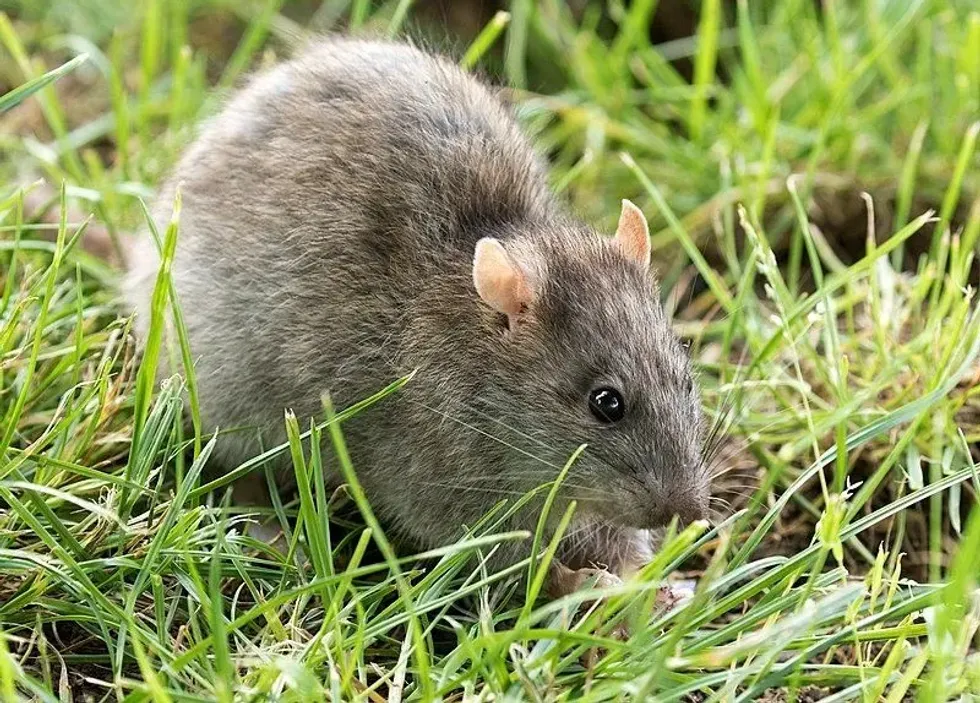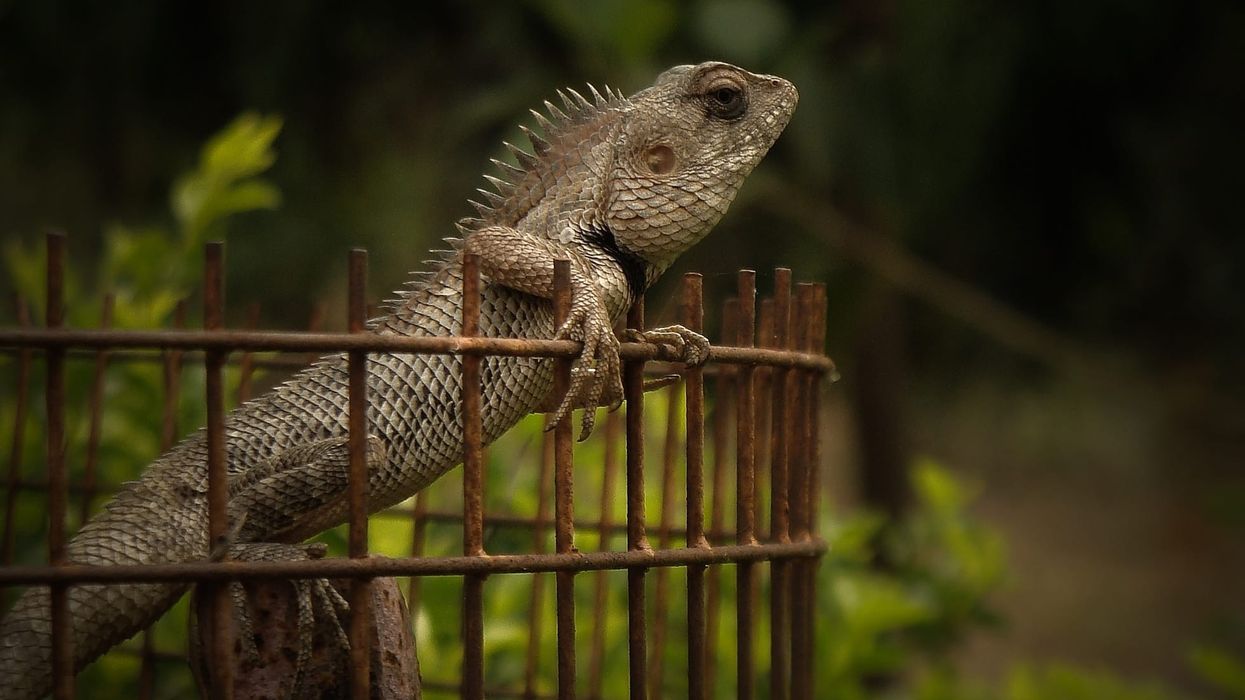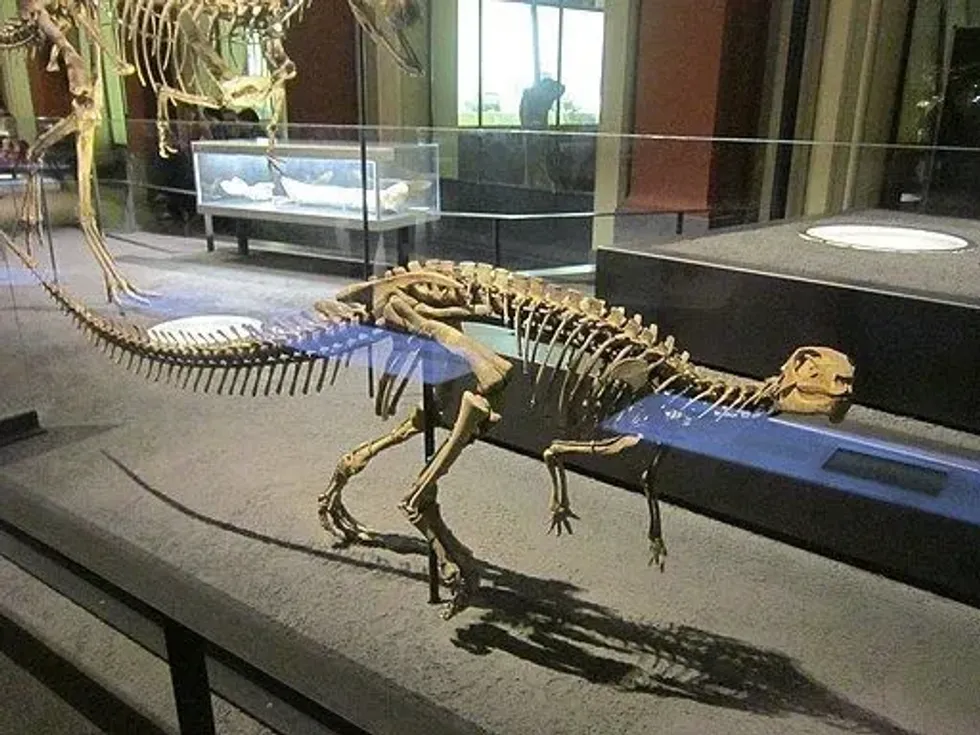If you want to learn about a rat species that is the size of puppies, you are in the right place.
The mountain giant Sunda rat (Sundamys infraluteus), also known as the giant mountain rat or giant rat of Sumatra, is a large rat that weighs around 0.5-1.3 lb (230-600 g) and is 19-25 in (480 to 640 mm) long, while the body length of this species is around 9-11.5 in (23-29 cm).
This species is native to a few countries of southeastern Asia, especially Indonesia and Malaysia. It is found either in subtropical or tropical moist montane forests or subtropical or tropical moist lowland forests. The elevation of the habitat remains between 2297-7874 ft (700-2400 m). This species mainly dwells in the Mekong Mountains of southeastern Sulawesi.
Like most rat species, the giant mountain rat is an omnivore and feeds on insects, worms, and different types of vegetation. The International Union for Conservation of Nature listed the species in the Least Concern category but these mammals are highly affected by threats such as loss of habitat and predation.
Let's read more fun facts about the mountain giant Sunda rat, and if you find this article interesting, don't forget to check out exciting facts about different animals like the tanezumi rat and the black rat.
Mountain Giant Sunda Rat Interesting Facts
What type of animal is a mountain giant Sunda rat?
The mountain giant Sunda rat (Sundamys infraluteus), also known as the giant mountain rat or giant rat of Sumatra, is a large rat species that is endemic to a few countries of southeastern Asia. A weight of around 0.5-1.3 lb (230-600 g) makes it somewhat larger than other species such as the Norway rat.
What class of animal does a mountain giant Sunda rat belong to?
The mountain giant Sunda rat (Sundamys infraluteus) is a species of the Rodent order, the class Mammalia, the family Muridae, and the Sundamys genus. Species such as Bartel's rat, Muller's giant, and the Sunda rat belong to the same genus.
How many mountain giant Sunda rats are there in the world?
The exact population of these rats is not known but the numbers seem to be stable currently. This species of rodent has been given a conservation status of Least Concern in the IUCN Red List.
Where does a mountain giant Sunda rat live?
Giant mountain rats are primarily found in southeastern Asia and you can easily find these rats in countries like Indonesia and Malaysia. This species mainly dwells in the Mekong Mountains of southeastern Sulawesi, an Indonesian island east of Borneo.
What is a mountain giant Sunda rat's habitat?
This species of rodent generally lives in forested mountains while the elevation of the habitat remains between 2297-7874 ft (700-2400 m). These rats are also found in subtropical or tropical moist lowland forests.
Who do mountain giant Sunda rats live with?
These rats are generally nocturnal and arboreal, preferring to spend most of their time on trees. Like other rats of the Murinae subfamily, it is suggested that they are social and prefer to live in small groups, while during the breeding season, they form pairs.
How long does a mountain giant Sunda rat live?
The average lifespan of giant mountain rats is not known, but murines from the Muridae family generally do not live for more than a few months in the wild, and the maximum recorded lifespan is around three years.
How do they reproduce?
Very little is known about their mating patterns, but it is said these rats use similar methods as other species of the Murinae family. These rats either use a polygynandrous mating system which means males and females associate for a brief period of time and have multiple mating partners.
These rats are known to be prolific breeders and females are able to produce when they are just a few weeks old. The litter size of giant mountain rats is not known, but other species of the Murinae family give birth to around 7-13 young ones. Both males and females generally protect and feed the young rats.
What is their conservation status?
Giant mountain rats are listed in the Least Concern category of the International Union for Conservation of Nature Red List, while only the Bartel's rat of the Sundamys genus comes under the Vulnerable category of the Red List as all other species are listed as Least Concern.
Threats such as loss of habitat and predation are a few major threats to giant mountain rats.
Mountain Giant Sunda Rat Fun Facts
What do mountain giant Sunda rats look like?
These giant mountain rats are generally dark brown with paler brownish specks, and the long fur is evenly covered with long silky guarded hairs. The naked tail of this species is uniformly brown in color.
 * Please note that this is an image of a brown rat, not a mountain giant Sunda rat. If you have an image of a mountain giant Sunda rat, please let us know at hello@kidadl.com.
* Please note that this is an image of a brown rat, not a mountain giant Sunda rat. If you have an image of a mountain giant Sunda rat, please let us know at hello@kidadl.com.
How cute are they?
The huge size of these rats makes them quite attractive. Also, they are quite social and love to live in small colonies.
How do they communicate?
Like other rats, giant mountain Sunda rats generally use similar methods to communicate with each other. These rats generally perceive the environment by using the sense of vision, hearing, touch, smell, and taste. They are also known for releasing pheromones, a chemical used during the breeding season to attract potential partners.
How big is a mountain giant Sunda rat?
Giant mountain rats weigh around 0.5-1.3 lb (230-600 g) and are 19-25 in (480-640 mm) long, while the body length of this species is around 9-11.5 in (23-29 cm). They are four times bigger than kangaroo rats, while some are even bigger than muskrats.
How fast can a mountain giant Sunda rat run?
The exact speed of giant mountain Sunda rats is not known as of now, but they are arboreal and look for their prey from trees. Also, these rats become quite active during the night.
How much does a mountain giant Sunda rat weigh?
The average weight of giant mountain Sunda rats is around 0.5-1.3 lb (230-600 g).
What are the male and female names of the species?
Male giant mountain rats are known as bucks, while the term does is used to refer to female rats.
What would you call a baby mountain giant Sunda rat?
Like other rats, babies of mountain giant Sunda rats are either known as kittens or pups. Both male and female rats generally protect and feed their babies.
What do they eat?
These rats are omnivores and consume an astonishing array of food items such as roots, gains, insects, berries, nuts, earthworms, and worms. Several Murinae species are known to prey on small birds, eggs, turtles, lizards, and frogs. They are generally preyed upon by eagles, hawks, snakes, and large lizards.
Are they dangerous?
Like other rats, they are not considered to be dangerous, but these rats are territorial and can turn violent if someone tries to provoke or harm them. They also possess sharp teeth that can even be used to bite intruders.
Would they make a good pet?
Giant mountain rats do not make good pets as they generally belong to the wild. These rodents are quite aggressive and territorial, unlike domestic rats. Dumbo rats are considered to be the friendliest rat species in the world.
Did you know...
There are more than 1350 species in the Muridae family.
What are mountain rats?
Mountain rats are the group of rodents that primarily dwells on forested mountains, and these rats are known for their heavy and muscular-built.
What eats the mountain giant Sunda rat?
Apart from birds such as hawks, owls, and eagles, these rats are preyed upon by large fishes, reptiles, and frogs. However, they have evolved multiple strategies to avoid being eaten. Many of them generally come out of their habitat during the night while some rely on their ability to escape predators.
Here at Kidadl, we have carefully created lots of interesting family-friendly animal facts for everyone to discover! Learn more about some other mammals from our nutria rat fun facts and fox squirrel interesting facts for kids.
You can even occupy yourself at home by coloring in one of our free printable muskrat coloring pages.
* Please note that the main image is of a brown rat, not a mountain giant Sunda rat. If you have an image of a mountain giant Sunda rat, please let us know at hello@kidadl.com.




 * Please note that this is an image of a brown rat, not a mountain giant Sunda rat. If you have an image of a mountain giant Sunda rat, please let us know at hello@kidadl.com.
* Please note that this is an image of a brown rat, not a mountain giant Sunda rat. If you have an image of a mountain giant Sunda rat, please let us know at hello@kidadl.com.




